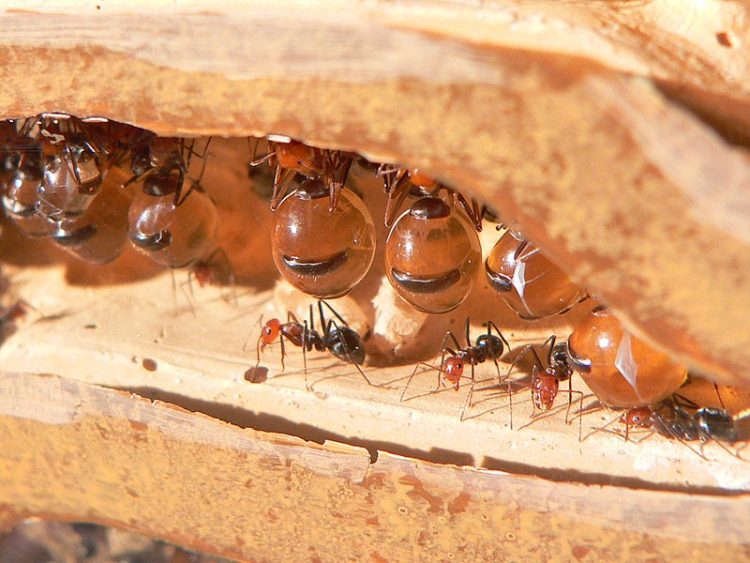Honeypot Ants, or honey ants, are specialized workers of several species of ants whose sole job is to gorge on nectar until they become living honey-storage.
Did you know that honeybees aren’t the only insects capable of producing the sweet, viscous, and brown-to-golden-colored natural product we know as honey? Several other species of bees, as well as bumblebees and even wasps are known to produce the sugary treat, but perhaps the most unusual insect able to convert nectar into honey is the honeypot ant. Belonging to a number of ant species, the most common of which is Camponotus inflatus, honeypot ants are specialized workers that act as living storage for their colonies when food is scarce.

Photo by Greg Hume CC-BY-2.5/Wikimedia Commons
Worker ants feed honeypots nectar collected from various plants until their abdomens expand to the point where they look ready to burst and spill the amber liquid inside. Known as ‘ant honey’, the sweet liquid is regurgitated by the honeypot ants whenever members of their colonies are in need of sustenance.
Species like Camponotus inflatus constantly feed honeypot ants with honeydew and flower nectar. At one point, the honey ants’ abdomens become so big that they are unable to move, so they just hang from the roof of their nest chamber until their fellow ants require their precious cargo.
Most species of honeypot ants are found in dry, desert, or semi-arid regions in Australia, the USA, Mexico, and on the African continent, where finding food sources can be tough, so the production and storage of honey is believed to be an adaptation to survive in these rough environments.
Honeypot ants are such a valuable resource that other ant colonies will sometimes attack and steal them. In Australia, aborigines also prize the honey-filled insects and will dig around for them. In the 1990 documentary Trials Of Life, David Attenborough himself was filmed popping a honeypot ant into his mouth.
So how does ant honey compare to honeybee honey? Well, according to one study I could find, although the two varieties look very similar at first glance, the honeypot ant honey has a less viscous consistency than bee honey. It is sweet, but not quite as sweet as the treat we humans are used to, and has a sour undertone not detected in the honeybee honey.
Another significant difference between the two types of honey is that glucose is present in higher quantities than fructose in ant honey, whereas the opposite is true for honeybee honey. Both varieties are high in antioxidants.






